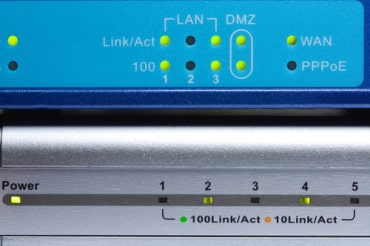
Business leaders must look at new approaches for continuously increasing data productivity to achieve the success of a data-driven organization.
It’s officially winter slump season, and while we might be feeling sluggish, it’s important to remember that while we may be moving in slow motion, our companies’ data does not have that luxury. In fact, data continues to flow in at unprecedented rates. According to IDC, worldwide data will grow from 33 zettabytes in 2018, to 175 zettabytes by 2025 – a 61% boost in just seven years. And with the immense increase in throughput and data volume that 5G is promising, the opportunities for exploiting data for business-changing insights have never been greater.
See also: Data Architecture Elements for Continuous Intelligence
But instead of asking how much data are we generating, it’s critical to plan for how we are going to capitalize on it. And while some organizations have solved the big data mystery (Coca-Cola, Netflix, Amazon, and PepsiCo), research from NewVantage Partners finds that some leading corporations are failing in their efforts to become data-driven. C-level technology and business executives from companies such as American Express, Ford Motor, General Electric, General Motors, and Johnson & Johnson report that the majority of them (69%) have not created a data-driven organization, although 92% report that the pace of their big data and AI investments are accelerating.
Regardless of the possible explanations for the failure of large firms to achieve the success of a data-driven organization, business leaders would benefit from looking at new approaches for continuously increasing data productivity. Considering that data streams do not stop for a “break,” as humans do, there are various ways for organizations to improve data productivity, including maximizing its impact and the speed at which it’s put to use. The path to maximizing data productivity begins with a strong foundation.
Selecting the right in-memory database
Data productivity begins and ends with the database. As more companies realize that leveraging real-time data is the key to success in modern applications, this usually drives people to search for the right in-memory database technology. However, with many options, comparing in-memory databases for your use case can be challenging. Regardless of use case and which database you choose, there are three essential components that any in-memory database must fulfill: being cloud-ready, Internet of Things (IoT)-ready, and ACID-compliant.
An in-memory database brings analytics to life by empowering them to serve customers directly. It possesses a highly innovative architecture, which eliminates many of the bottlenecks associated with legacy databases and enables multiple queries to be run in parallel on distributed data stores because both the data and the work are partitioned. It also provides very low latency of single digits of milliseconds while ensuring high throughput of millions of transactions per second. Overall, these capabilities enable applications to ensure that the interaction occurs in real-time for all users. But real-time interactions also require the right stream processing architecture to maximize data productivity.
Implementing a stateful stream processing architecture
In today’s digitally driven world, processing streaming data in real-time is a requirement for business success, and the introduction of 5G networks will only increase the data volume and speed requirements that are already putting pressure on traditional data architectures. Organizations need to manage this extraordinary increase in data traffic, not just to ingest, but also to drive actions by making intelligent, dynamic decisions across multiple streams of data. While current data streaming architectures are usually sufficient to act as processing pipelines, they don’t meet the needs of mission-critical applications, which are underscored by the low latency and responsive multi-step decisions.
By reducing the three disparate functions for ingestion, processing, and storage down to a single unified layer with fully ACID serializable transactions, stateful stream processing significantly simplifies the data processing architecture. Decreasing latency and architecture complexity is the key to empowering organizations to deliver value more quickly and intelligently. By analyzing and acting on incoming data, it drives better monetization of their real-time data which is being accelerated by 5G, artificial intelligence (AI) and machine learning trends. Once you can analyze and act on data streams, you must then apply those insights to the business in real-time.
Leveraging analytics for real-time decisions
While data may be growing at an unprecedented pace, it’s also changing just as quickly. It’s getting faster, storage tactics are shifting, and best of all, it is increasingly valuable. For many organizations, data is an inexhaustible resource that holds invaluable insights to help drive business. In order to get there, applications need to operate in real-time to make immediate decisions on streaming data or data in motion, on both customer-facing applications that drive revenue or build brand loyalty, as well as those internal applications that help businesses operate efficiently, reducing bottom-line costs. Using analytics directly in the applications can help automate business workflow and eliminate manual processes.
Credit card fraud detection is the perfect example of a process best applied in real-time. If the systems can’t stop the fraudulent transactions during the purchase approval process (in-line or in transaction), and fraudulent behavior is detected post-transaction, then you have failed your customers. Not only do banks and merchants have to do all of the legwork to reverse the transactions with costly chargebacks, but you also leave yourself exposed to additional fraudulent activity as you try and roll back the transactions. Even though your analytics are able to identify accurately and flag fraud on suspicious behavior, living in a post-event or reactive state means applying manual processes, opening yet another window of opportunity for fraudsters. Businesses must operationalize the analysis so that it not only detects fraud but also prevents and acts against the fraudulent events in-line during the transaction. Below are tips for applying such intelligence and analytics to enable operational decisions:
- Execute numerous complex rules and business logic within each individual transaction and complete it in milliseconds. We live in a world where users expect lightning-quick interactions within their applications that often require a decision within 250 milliseconds. Out of that latency budget, about 50 milliseconds are left for your database to respond to the end-user.
- Accommodate hundreds of thousands – even millions – of concurrent users of the application. The system must be able to handle the requests of these users at a transactional level simultaneously.
- Consistently deliver the performance: 100% of customer requests should be returned within the budgeted latency (milliseconds).
The drive to utilize data to drive business is not a new concept – there exists a long history of thought and innovation, which have led us to the dawn of the data age. In fact, the term “business intelligence” was coined in 1865. But throughout the years, change has been constant, and with the emergence of 5G networks, data is about to take on a whole new meaning.
5G: Fueling the data deluge
With the immense increase in throughput and data volume that 5G is promising, the need for real-time data analytics is essential for organizations to capitalize on 5G networks when it comes to the IoT, AI, network slicing, and more. To generate value from all of the data, organizations must be prepared to operationalize this fast data to make informed business decisions in-event and in real-time. But this is easier said than done.
As the much-anticipated network emerges, the need for real-time, actionable decision-making is greater than ever before. Without a real-time data architecture powering next-generation applications and microservices, organizations will be unable to monetize their real-time data, forfeiting a competitive advantage by transforming their infrastructure from post-event to in-event and actionable.
Analytics, as a part of your big data strategy, provides the insight that powers your business. Applying the analytics in real-time applications, such as fraud detection, risk/portfolio management, or regulatory compliance, will maximize the value of your analytics and automate your business process. So the question is: will your business take the steps needed to upend its competition through technological dominance, or will you accept parity and see what the future holds?




























